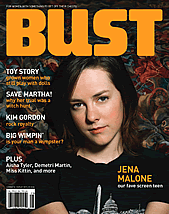More on Steve Kurtz
From CAE_Defense.
June 29, 2004
FOR IMMEDIATE RELEASE
Contact: media@caedefensefund.org
"BIOTERROR" CHARGES DOWNGRADED TO "MAIL FRAUD" IN STEALTH INDICTMENT
U.S. Attorneys attempt to cast $256 technicality as health and safety issue in "stealth" indictment
Professor Steve Kurtz was charged today by a federal grand jury in Buffalo, New York--not with bioterrorism, as listed on the Joint Terrorism Task Force's original search warrant and subpoenas, but with "petty larceny," in the words of Kurtz attorney Paul Cambria. (See http://www.caedefensefund.org/ for background.)
Also indicted was Robert Ferrell, head of the Department of Genetics at the University of Pittsburgh's School of Public Health. The charges concern technicalities of how Ferrell helped Kurtz to obtain $256 worth of harmless bacteria for one of Kurtz's art projects.
The laws under which the indictments were obtained--Title 18, United States Code, sections 1341 and 1343, covering mail and wire fraud--are normally used against those defrauding others of money or property, as in telemarketing schemes.
This is a far cry from the bioterrorism charges originally sought by the District Attorney. To make a "federal case" out of such minor allegations, the District Attorney will have the burden of proving criminal intent.
"There was very obviously no criminal intent," said Kurtz attorney Cambria. "The intent was to educate and enlighten." Cambria suggested that the pursuit of such a minor case at the federal level was profoundly absurd. "If the University of Pittsburgh feels that there was a contract breach, then their remedy is to sue Steve for $256 in a civil court."
A STEALTH INDICTMENT
The U.S. District Attorney attempted to cast the issue as one of public health and safety in a public press conference called without the knowledge of either defendant's lawyers, thus eliminating the chance of rebuttal. During the conference, parts of which were broadcast on local Buffalo news channels, U.S. Attorney William Hochul and U.S. District Attorney Michael Battle repeatedly alluded to "dangerous" and "bio-hazardous material," even though the charges have nothing to do with such issues, and scientists universally regard the materials in question as safe.
At one point in the press conference, U.S. Attorney Hochul stated that Serratia marcescens, one of the two bacteria ordered by Ferrell, "is in fact a dangerous material in that it can cause pneumonia." Serratia cannot cause pneumonia, only aggravate it in someone who already has it, and very rarely at that. Furthermore, it would be hard to characterize as a "dangerous material" something that high school students routinely use in biology class experiments. (Easily trackable by its bright red color, S. marcescens is commonly used to demonstrate the many ways microbes can be destroyed--e.g. with household bleach. The other bacterium, Bacillus globigii, is also used in experiments as a stand-in for dangerous microbes--precisely because it is harmless.)
Many believe the attempt to cast the $256 technicality as a public health and safety issue is a face-saving measure by the government, which has already expended an enormous amount of time and money in their fruitless pursuit of this case.
ONLY THE BEGINNING
Although the original bioterrorism charges are now completely off the table, the trial still promises to be financially and psychologically draining for the defendants.
The international support of the defendants by artists, scientists and other citizens has been remarkable; it is crucial that this support continue as the government extends this outrageous and wasteful persecution into a grueling trial.
To donate to the defense fund, please visit http://caedefensefund.org/donate.html. Updates on the case will be posted at http://www.caedefensefund.org/. To receive more frequent updates by email, please join http://groups.yahoo.com/group/CAE_Defense/.

Click to join CAE_Defense































